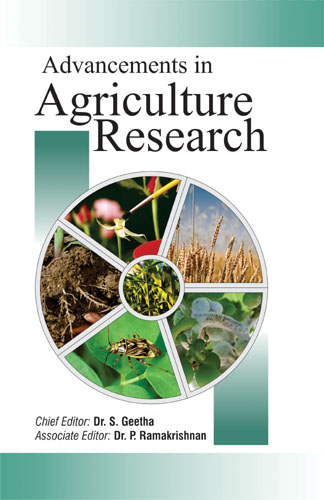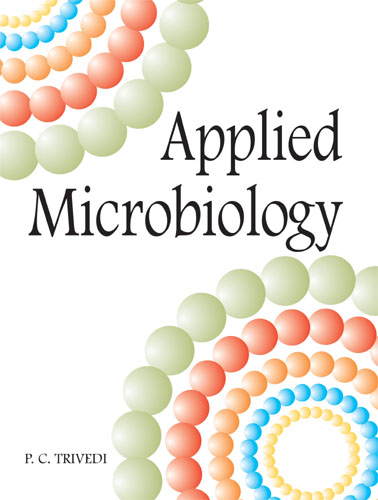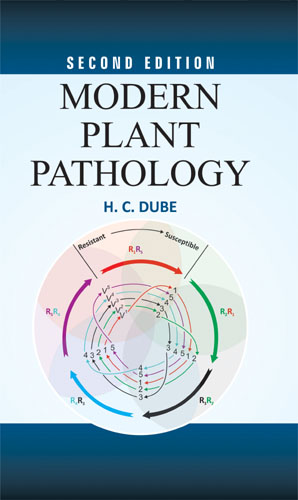Alternaria Blight Of Brassicas: Identification, Characterization, Epidemiology And Management NEW
- Rapeseed and mustard form an important part of the total oilseed production in India. Among the different biotic stresses which influence the performance of rapeseed and mustard, Alternaria blight disease caused by Alternaria brassicae (Berk.) Sacc. is considered as one of the major yield attributing factor in West Bengal causing considerable losses to the crop. In view of the potentiality of the disease and its annual recurrence in unpredictable climatic condition facing off now in lateritic belt of West Bengal, attempts were made for studying the Alternaria blight of mustard with a view to get information on the existing isolates of the pathogen, their potential level of natural incidence, disease – environmental relationship and to explore the possibilities of controlling the disease with the help of SAR chemicals, biological agents and by selecting some resistant cultivars suitable for this location. An attempt was also made for development of a probable potent marker in relation to Alternaria blight resistance. RAPD profile analysis was carried out using different RAPD primers and extent of polymorphism with each primer was studied. Using the RAPD derived finger print profiles using selected primers, amplicon size for susceptible, moderately susceptible, highly susceptible and moderately resistant genotypes was also determined which formed the baseline for development of Alternaria blight resistant marker. Cluster analysis using morphological (epidemiological) traits and RAPD fingerprint profiles were also found to exhibit parallelism forming an important aspect of the study undertaken. This book is the final outcome of that exploratory/scientific research.
Dr. Mamgain A
555 Introduction
I. Background
2 Strategies for Disease Management
Plants Elicitors
Biological control or Biocontrol
Host Plant Resistance
Markers
Statement of the Problem and Objectives of the Study
Scope and Importance
3 Past Studies
Symptomatology
Geographical distribution
Yield loss
4 The Pathogen
Taxonomic position
Host range
Disease cycle
Process of infection and pathogenesis
5 Epidemiology
Disease development in relation to environmental conditions
Physiological changes in host during infection
Phytotoxins
Host resistance
Disease Management
Molecular marker technology (M.M.T.)
Marker assisted selection (MAS)
Combined marker assisted selection
Advantages of MAS over conventional methods
MAS versus phenotypic selection
Molecular mapping of disease resistance genes
Determining probable potent marker in relation to disease resistance
Overview of “Review of Literatureâ€
6 Research Methodology
Experimental site
Agro-climatic conditions of the experimental site
Cropping history of the experimental field
Land preparation
Application of manures and fertilizers
Varieties grown
Experimental design
Calendar of operations
Preparation of media
Collection and maintenance of Alternaria isolates
Collection of infected plant samples
Cleaning of glass wares and slides
Sterilization in hot air oven
Sterilization of media in autoclave
Studies on morphological variability of Alternaria brassicae
Survey on the natural incidence of Alternaria leaf blight of rapeseed and mustard
Evaluation of different abiotic chemical agents (elicitor compounds) for management of Alternaria leaf blight
Evaluation of different biological control agents for management of Alternaria leaf blight
Screening of rapeseed-mustard germplasms for their resistance against Alternaria blight under natural conditions
Studies on the effect of Alternaria leaf blight on the yield components of different rapeseed-mustard varieties
Influence of environmental factors on Alternaria leaf blight development on rapeseed-mustard
Methods of statistical analysis
Development of molecular marker linked with Alternaria blight of rapeseed and mustard
7 Results and Discussion
- Findings of Objective 1: To study the morphological variability of A. brassicae present in the undulating red and lateritic zone of West Bengal
- Findings of Objective 2: To study the natural incidence of Alternaria leaf blight of rapeseed and mustard in the undulating red and lateritic zone of West Bengal.
- Findings of Objective 3: To evaluate different chemical agents (elicitor compounds) for management of A. brassicae induced leaf blight
- Findings of Objective 4: To evaluate different biocontrol agents for management of A. brassicae induced leaf blight
- Findings of Objective 5: To screen various genotypes grown in the undulating red and lateritic zone of West Bengal for seeking their resistance against the disease.
- Findings of Objective 6: To study the effect of Alternaria leaf blight on the yield components of different rapeseed and mustard varieties grown.
- Findings of Objective 7: To study the influence of environmental factors on the progress of Alternaria leaf spot of rapeseed and mustard
- Findings of Objective 8: To determine probable potent markers in relation to Alternaria blight resistance using RAPD derived fingerprint profiling
8 Summary and Conclusions
Summary
Scope for future research
Appendix
- Meteorological data in weekly representation for I crop season i.e. 2011- 2012
- Meteorological data in weekly representation for IIcrop season i.e. 2012- 2013
- Analysis of variance in CRD for average conidial length of different Alternaria brassicae isolates
- Analysis of variance
Book Details
Alternaria Blight Of Brassicas: Identification, Characterization, Epidemiology And Management NEW
MONAGRAPH
240
0
0
AMERICAN ROYAL (6X9)
0 Gms
All Rights Reserved
M/s AGROBIOS (INDIA)
SCIENTISTS AND RESEARCHERS | UG STUDENTS |












